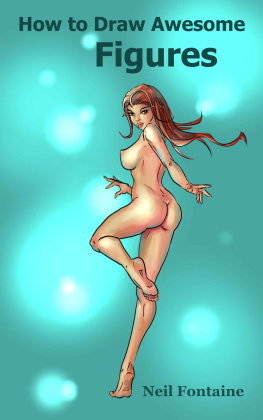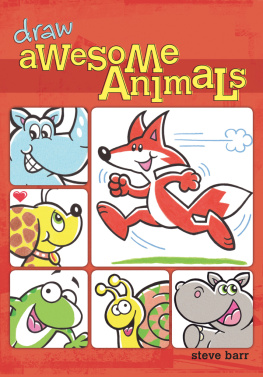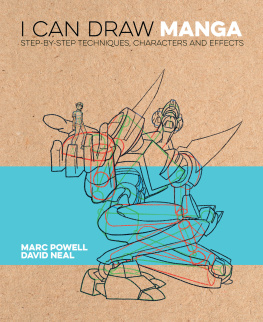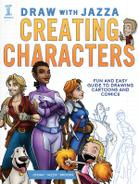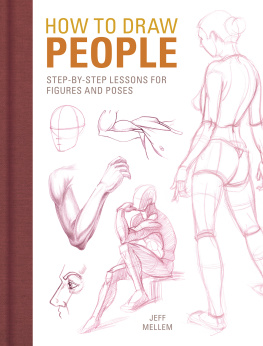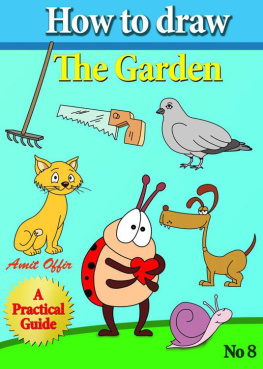How to Draw Figures For Comics and Concept Art
By Neil Fontaine
Copyright Neil Fontaine 2014
Table of Contents
Introduction
Hi, Im Neil Fontaine, the art instructor at http://masterpaintingnow.com and the top art instructor at Udemy. I studied art in San Jose, California as well as did a lot of personal study. I then went on to teach how to draw and have been doing so since 2006. (You can access my full video courses by clicking here . They are only $30 for full courses and often on sale for under $15.)
During this time, I have developed a simple-to-learn system for drawing the human figure. Once learned, you will draw people quickly and easily. So, if you want to draw amazing figures for your concept art characters and comic characters, then read this book.
What you will and will not learn
To keep this book affordable and on point, were going to focus mainly on drawing the figure, both male and female. We will not go into detail about the face, poses, character design, etc. All that knowledge is necessary to creating great characters, but first, and most importantly, we need to learn to draw the figure properly.
The focus of this book is to get you drawing the human figure from your imagination. To do that, you need to not only learn the basic figure, but you will need to learn some anatomy, like where muscles attach.
I know, anatomy sounds boring and too hard to learn, but I break it down in a simple way that anyone can understand. On top of that, I only focus on the muscles and bones that are important to drawing figures from imagination.
I include several reference photos and drawings for you to study and use.
As a quick side note, when I say you need to learn to draw the human figure from imagination, I mean without any references, without looking at anything, not a photo, drawing, or person. This might sound impossible, but believe me its not. Ive done it.
After I achieved this ability to draw the human figure completely from imagination, I found a new bliss in drawing, one I never felt before. I found drawing exciting again.
How to read this kindle book.
Before every picture, I will give you important information about the image. Please read everything. If you dont, then you are missing the whole point of the book. I know what you might be thinking. I remember when I first started learning to draw, I just flipped through my drawing books, thinking I would magically learn to draw better by drawing the images in the book.
I didnt read them. I wish I had. Why spend money on a book and not read it?
If I could rewind time, I would read all those drawing books right away. Instead, I didnt, not until much later in life, in my 20s. I had to learn all the fundamentals by actually reading the books.
Dont worry, though. My teaching style is quick and on point, so you will not have to do much reading in order to learn how to draw the human figure for your comics and concept art.
Chapter 1: Proportions
This is probably the most important part of figure drawing to master. If you fail to master the proportions of the figure, then all your figures will look off, no matter how awesome all the details are. Lets look at an example of the same figure, one with proper proportions--the other without. The drawing details are the same, though.
The legs are too short and breast too high on the left image. Also her left arm, our right is too long. These simple proportional mistakes make the figure look off, despite how good the details might be.
So take the time to study this chapter and do the exercises.
Professional concept artists and comic artists use the eight headed figure the most, so we will first learn to draw the eight-headed figure. All relative proportions can be based on the eight-headed figure.
We will draw the female by learning her proportions, then we will learn the differences of the male, because If you can draw the female, then you can draw the male.
Draw a line. Divide it in half. Then divide the bottom half in half. The knees will go just above that line.
Divide the top half in half, then divide that half in half again. The top section is where you will draw the head. The width of the head is about half its height. In the top 3 rd of the second section, draw the collar bones. This gives you the length of the neck, as you can see in the drawing below.
Next is an easy way to get the length of the rib cage and placement of the belly button. Draw stick arms extending from the edge of the collar bone to the halfway line, which is where the crotch will be. Then divide that arm length in half. The rib cage will reach just below this halfway mark of the arm. It also marks the elbow area of the arm.
Draw simple rectangle shapes for the hand placement. The hand is almost as tall as the head.
Next we will draw the hips and stick-figure leg bones.
When you draw the hips, draw them as a triangle. The height of the triangle goes from the crotch line to just below the bellybutton.
The stick-figure leg bones have an S curve to them. I will show you this is true with a picture of a skeleton. I will also show you an alternative way to draw legs to be a bit longer, which can add sexiness to your female figures.
The most important part of the femur (upper leg bone) is that is comes off the hips at an angle. This makes the widest section of the female figure, which happens to fall at the crotch line.
Be sure to draw the knees above the halfway leg line. Also, the feet take up a third of the lowest section, as you can see in the drawing below.
Draw this stick figure many times until it feels natural to draw it from imagination. This is the most important foundation you need to master. Without this, you will not be able to draw good figures from imagination, and that is a necessary skill as a comic or concept artist.
Here is a picture of the skeleton, so we can see how accurate the stick figure skeleton I taught you represents it.
Now you can see how the stick-figure skeleton represents the real skeleton. However, there is no reason to commit to memory the actual skeleton. Only the stick-figure skeleton. The important bones that show through the body, we will go over later. For now, draw the stick-figure skeleton at least 20 times from reference, measuring accurately each time. Only then try to draw it from imagination.
If you fail at drawing it from imagination, then draw it from reference 10 more times before attempting to draw it from imagination again. By imagination, I mean use no references.
Also, be sure to let the information sink in for a day. You will find the next day that you can draw the stick figure much better. It might take a few days or even weeks to master the stick figure, so that you can draw it from imagination without errors. Be patient.
They say in order to be good at something, you must do it a thousand times. Just like playing the piano takes lots of practice, so does drawing. You must draw the stick figure over and over, filling up pages before it will come naturally to you.
Chapter 2: The Mannequin
Once you have mastered the stick figure, the mannequin will be easy to draw. However, if you were lazy with learning to draw the stick figure, then your mannequins will look odd. You might not understand why they dont look that good. It will be because the proportions are off.
Master the stick figure. It is super important.

